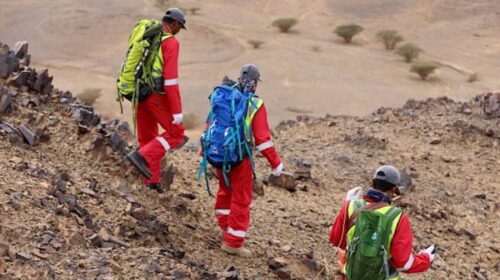How reliable wireless communication is driving autonomous mining
Although slow to embrace digitalisation, mining is racing ahead of many other industries in its adoption of autonomous technology. Harnessing industrial IoT sensors, cameras, edge computing, artificial intelligence (AI) and machine learning, mining operators are developing increasingly powerful algorithms using data from cameras and sensors to drive autonomous vehicles in their various operations. One of the key technologies making this possible is private wireless – based, today, on 4G/LTE and, in some early cases, 5G.
The success of these autonomous technologies has many mines pursuing a full automation strategy without human intervention (aka Level 9 automation), where all manually operated equipment – including diggers, ore haulers, crushers and trains – will eventually be replaced with their autonomous counterparts.
In places where fully autonomous isn’t practical, tele-remote operations will enable key personnel to monitor automated processes and operate machinery at a distance using virtual telepresence. These aren’t merely aspirational use cases. There are a number of mining suppliers that currently offer autonomous systems, such as Komatsu, and they’re being widely adopted across the industry.
Komatsu’s Autonomous Haulage System (AHS)
Autonomous Haul Trucks (AHTs) from Komatsu, the world’s best-selling, ultra-class dump trucks, have moved more than 3 billion tons to date. The company anticipates that through FY2020, they will have more than 350 autonomous trucks hauling copper, iron, coal and oil sands at over 15 sites, across three continents. The company has worked closely with customers to fine-tune safety features; achieving the system’s 13-year, zero-harm safety and productivity record
A full truck fleet can be monitored by a single controller, located thousands of kilometers away, and can be operated 24 hours a day, seven days a week. The approach delivers significant safety, productivity, reliability, performance and operational benefits to mine fleet owners. One Australian mine, using 50 AHTs, calculated productivity benefits of 75 hours per truck per year. This meant an extra 1.5 million tons hauled for top-line growth of 50M euros.
Another interesting use case for AHS is hang time reduction. ‘Hang time’ is the amount of time that a shovel or a digging unit might hang with a full bucket waiting to dump its ore in the truck. With an automated system in place, a shovel can reach zero hang time as the truck navigates to the spot point automatically, without the shovel needing to hang as a visual indicator. At a rate of 18 loads per hour and 20 hours per day, automated operations have shown to add more than 500 extra hours of shovel capacity and a huge productivity increase of more than 2 million tons per year.
Reliable wireless connectivity
Reliable wireless connectivity is key for Komatsu’s AHS. 4G/LTE private wireless technology has been critical to the progress of the system. In early trials of AHTs, Komatsu used Wi-Fi to control the trucks. A Komatsu internal study with Wi-Fi connected Autonomous Haul Trucks (AHT) at three production sites revealed that communications equipment problems – up to five or six errors per truck per hour – accounted for 15.13% of time lost during a 24-hour period, adding up to13 minutes of lost time per AHT per day.
Transitioning to a 4G/LTE private wireless network reduced these kinds of communication errors per truck operating hour by 84.6% at a production customer site. This resulted in a productivity increase of 8.5%, up to 250,000 tons per year, depending on shovel output rates. At the same Australian mine referenced earlier, the transition to private wireless was responsible for 90% fewer stop events (caused by faulty Wi-Fi handoffs) and a 7% gain in fuel consumption.
Originally, 4G/LTE was designed for mobile communications up to 350 km/hr to support high-speed trains. AHTs, of course, do not move anywhere near this fast. However, they still move faster than what Wi-Fi can support, which was never designed for mobile handoffs faster than walking speed. 4G/LTE is also much more secure, provides wider coverage and is highly tolerant of radio interference.
4G/LTE’s more robust cellular technology will take an even bigger step ahead with the arrival of 5G, which is expected over the next few years. 5G will cut the latency associated with 4G/LTE by an order of magnitude, to ~1ms, providing a significant boost to machine automation. 5G will also support massive IoT sensor networks, very high bandwidth and, as a result, open up many more use cases.
Underground mining environments, with their continuously changing networks of tunnels, pose specific communications challenges compared to open-air outdoor sites. The communications network needs to deliver reliable wireless voice and data communication across ‘blind’ production areas and in narrow drifts and galleries with massive stone walls.
4G/LTE and 5G were originally engineered to deal with the intense interference typical of downtown urban cores, and the challenges of covering inter-city metro tunnels were also solved decades ago. Although very different locales, metro tunnels and underground mines have very similar characteristics for radio wave propagation.
The progress of the mining industry in adopting autonomous technologies is impressive. There is a broad recognition in the industry that autonomous and teleremote operations are the future. Key mining industry players, like Komatsu and others, are enabling the industry to move quickly to realise their ambitions – harnessing technologies such as IoT, AI/ML, and 4G/5G private wireless to build the mines of the future.
source: Mining Technology
![]()





